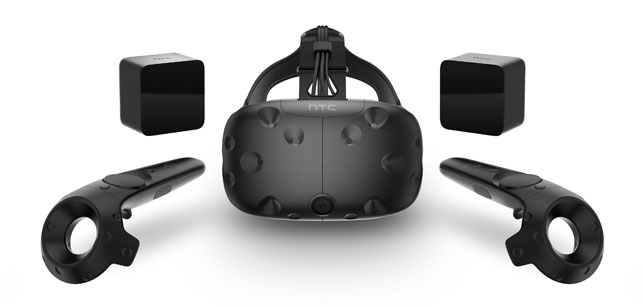After a couple of weeks immersed (pun intended) in the world of VR, Al Dean has been thinking about the future of interaction when it comes to complex 3D design
Over the last few weeks, I’ve been deep diving into the world of virtual reality. For those of us that remember when the term fi rst came up, I’m sure you remember that there was a lot of promise, but in the end the “reality” we were promised never really panned out. Of course, the VR industry continued to grow but in the cash rich organisations that have typically had the budgets required to build up such systems. The idea of just strapping on a headset and getting to work never really panned out.

HTC’s Vive headset. Full motion tracking in a 5m x 5m room. Outstanding!
That was 20 years ago, but in the last couple of years, we’ve seen a huge rebirth of interest in the fi eld. If you follow the tech market trends, then you’ll no doubt have heard about the big names in the fi eld that have come from nowhere. Oculus was sold to Facebook in a multi-billion dollar deal, smart phone manufacturer, HTC has been gaining plaudits for its Vive headset (which certainly seems to have taken off) and there’s more to come.
What’s driven this resurgence of a long dormant industry? The answer is that the focus has shifted from the professional to the consumer. The gaming industry is huge and there’s a wealth of exploration of the potential for more immersive environments as a result. While we might be used to fi ring up the PS4 and going to town in Call of Duty, it seems the next generation will do the same within a completely immersive environment, with fully tracked headsets and controllers.
But what’s interesting is that there’s a vein of this tech that’s being mined by the industrial user. After all, if you can present a real time, near photorealistic model, and walk around it, interact with it and view it, just as you would in the real world, then why the hell wouldn’t you want to do it? And if you can do that with a thousand dollar’s worth of hardware, then the argument becomes pretty compelling.
The thing that I’m quickly coming to realise is that it doesn’t just end with a VR headset and a workstation powerful enough to not give you motion sickness in 10 minutes flat. The consumerisation of VR is going to pay dividends across the whole spectrum of much that we do. Devices and applications exist, and will become available, that will assist in many of the tasks designers and engineers carry out on a daily basis.
Take rendering. VR has implications there and the same skillset we’ve built up with a decade or more of excellent work in visualisation will be just as applicable. But it’ll be benefi tted by the release of consumer class devices.
In the last month or so, we’ve been playing with a small 360 camera from Ricoh (the Theta S). This device is 300 quid. With it, a tripod and a $3 app on your smartphone, you can place it in a position then capture 17 different exposures of a scene — all in two minutes.
These can then be loaded into an automation script in Photoshop and, hey presto, you’ve got yourself a HDR environment that can be thrown into any number of 3D rendering systems. Grand total cost for doing that? Around 340 quid, if you buy a fancy tripod (and of course, we’ll be detailing how in the next edition).
Previously, to accomplish the same thing (albeit at a higher resolution), you’d be looking at a very expensive Spheron camera or spending hours messing about with a DSLR and a shiny ball, then more hours of post processing.
Of course, that doesn’t mean that everything will come down in price. It also means that some clever folks will take things to the next level. One example that came up recently was by effects house, The Mill, who have built a fully adaptable car that captures all of the data you need to generate full car rendered assets.
Its Blackbird prototype car can be adjusted to suit the car you’re simulating, driven, with full HD capture of motion and surrounding environment. That data can then be hooked up to a digital representation of the car and rendered out. It’s worth taking the time to watch the video as it’s truly breathtaking.

Full driving and environment dynamics capture what’s ready for render and visualisation. The future looks amazing
The conclusion that I’ve come to is that we’re on the cusp of something truly amazing happening across the whole design and engineering software industry. It won’t make the job any easier, but it will make the processes that make up the job easier, more cost effective and the decisions we make more informed and engaging.

How will designers be able to adopt consumer tech?
Default






